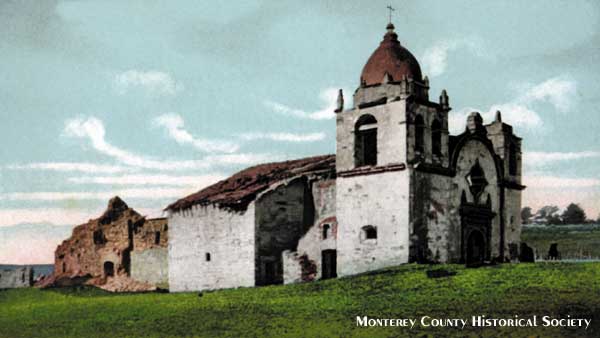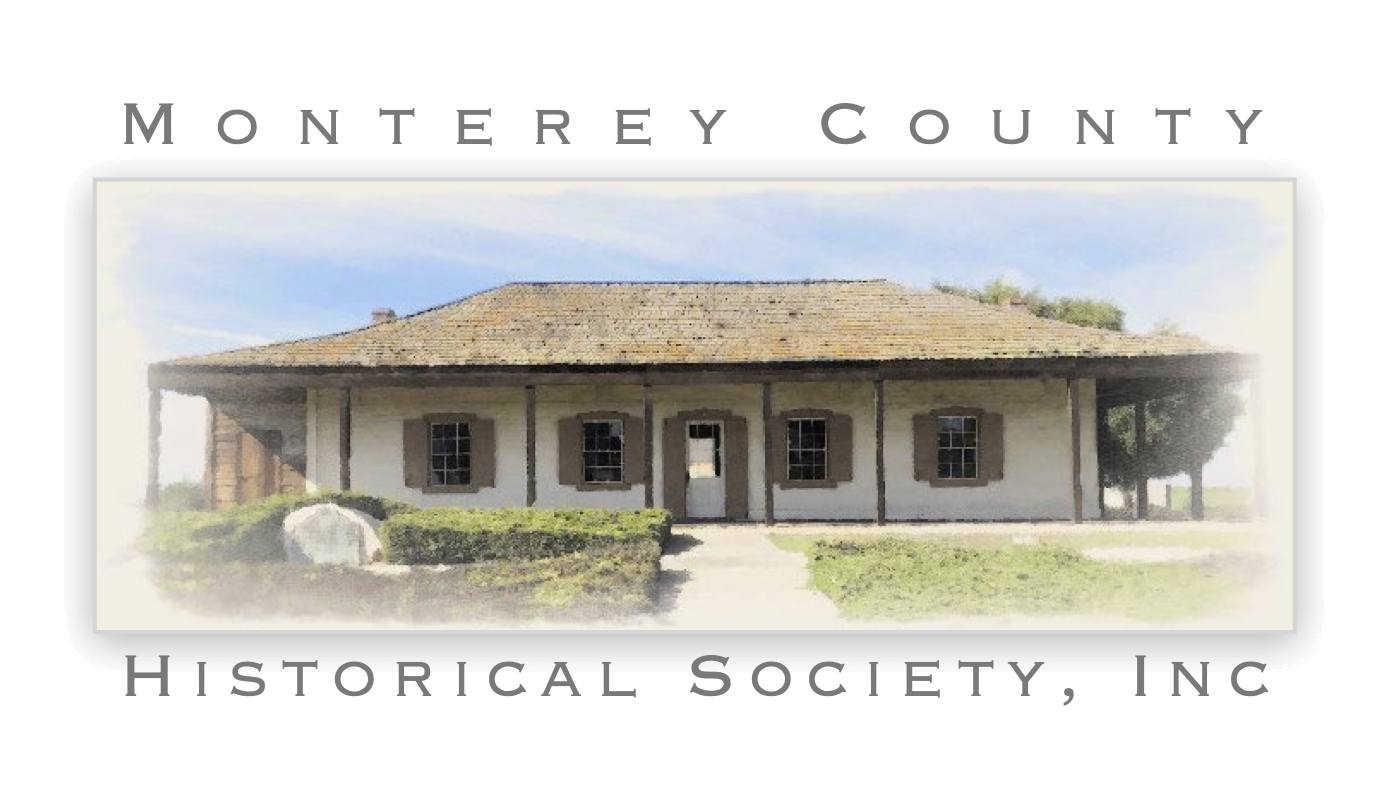by Gary S. Breschini, Ph.D.
Mission San Carlos Borromeo, second of the 21 California’s 21 coastal missions, was founded on June 3, 1770 by Junípero Serra. The original location was at the Royal Presidio of Monterey, located “two gunshots from the beach” and adjacent to Lake El Estero in Monterey.
The original location of the Mission and Presidio is now the site of the San Carlos Cathedral.

Right: Indian man and woman at Monterey, drawn in 1791 by José Cardero of the Malaspina expedition.
Serra realized that Monterey was not a very good location for his mission. There were too few Indians and it was too close to the presidio and the soldiers (some of whom were “leather-jacket” soldiers, who were often recruited from jails).
Serra did not want his Indian neophytes exposed to their influence. Also, there was no good agricultural land around Monterey, and the mission would have to grow much of its own food. When the ship San Antonio left on July 9, 1770, just five weeks after the founding of Monterey, it carried a message asking permission to move the mission to Carmel.
Permission to relocate the mission was received in May of 1771, and by July Serra began working in the Carmel Valley on the new site for the mission. Serra directed some of the construction himself, using four neophytes (converted Indians) from Baja California, five soldiers and three sailors. The first mass was held at that location on August 24, 1771, and Serra officially moved into the newly constructed buildings on December 24, 1771. The abandoned church at the presidio became the Church of the Royal Presidio and later the San Carlos Cathedral.
As at the presidio, the first buildings at the new mission site were logs stuck into the ground, with additional logs forming a framework for a thatched roof. The first buildings included one room for a chapel, a four-room dwelling, a granary, and a dwelling for the servants and its kitchen. These were surrounded by a stockade about 130 by 200 feet in size, which included a guardhouse for the soldiers.
By the end of 1771, the population of northern California had reached at least 60, with 31 at the Presidio of Monterey, 14 at Mission San Antonio, and 15 at Mission San Carlos (Carmel). In addition, there were 22 baptized Indians at Carmel.
Farming was not very productive in the early years, and the supply ships often did not arrive. Culleton writes about the difficulties the missionaries faced:
The summer of ’73 came without bringing the supply ship. Neither Carmel nor Monterey was anything like self-supporting. The presidio had some cattle and the stock belonging to the projected northern missions. No doubt there had been some planting but certainly no more than was necessary for its own personnel. In December ’72 Father Crespi had sown about five bushels of wheat and a bit of barley in the field called San José. Early in ’73 he planted a few pecks of beans and corn in the field called San Carlos. The land in both cases was but poorly spaded as they were not able to plow. July 5 there fell a frost which ruined the beans and half the corn. The rest yielded about fifteen bushels.

Copyright 2000 by G.S. Breschini
Sources:
- Culleton, James, Indians and Pioneers of Old Monterey (Academy of California Church History, Fresno, CA, 1950).
- Engelhardt, Zephyrin, Mission San Carlos Borromeo (Carmel): The Father of the Missions (Mission Santa Barbara, Santa Barbara, CA, 1934).
Links:


